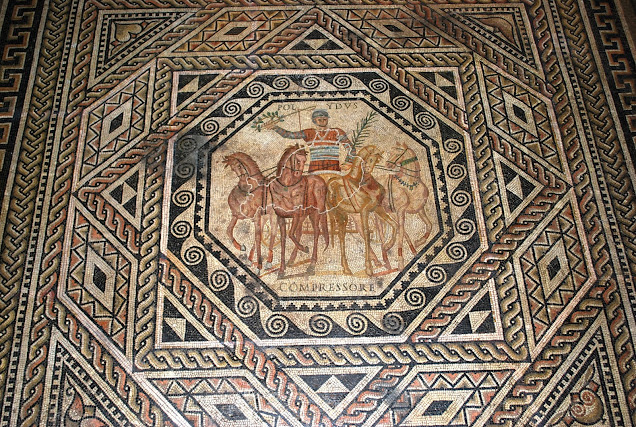The tame lions of Puteoli
As testified by little glas flasks, little glass souvenirs which the travellers of Roman times took away from their visit to Puteoli, the Flegrian city was famous due to the presence of two amphitheaters in its center, a privilege which no other Roman city, other than Rome, could claim. Of the smaller, pre-Augustian, older amphitheater, little is known, while destroyed during the construction of the Naples-Rome railway.
It seems that the older arena was used for gladiator shows and the new one hosted venationes, great exotic animal hunts of which Puteoli was the largest importer of the Roman world. This story is about the larger and also newer one.
The large amphitheater of Puteoli is of great size and beauty. After the Colosseum and the one of Capua, it was the third largest in Italy. It measured 149 metres x 116 metres with a capacity for 40.000 specatators. It is unclear when the building was built exactly; it has been dated as been constructed during the Flavian period, but deeper investigation has shown that it was around 69 AD, during the reign of Nero. The mysterious absence of records referring to its founding could be linked to the 'damnatio memoriae', which the Emperor suffered under the Senate and all the words dedicated to him were eliminated.
The amphitheater of Puteoli is also the scenery of the Christian legend of Saint Gennario (or Januarius). According to various Christian legends, Januarius was allegedly born to a rich patrician family that traced its descent to the Caudini tribe of the Samnites. When he was 20, he (already) became Bischop op Naples. During the persecution of Christians by Emperor Diocletian, he hid his fellow Christians and prevented them from being caught. He too, however was arrested and along with his colleagues was condemned to be thrown to wild beasts, 'ad bestias', in the amphitheater; and here the legend starts. In fact they were beheaded at the Solfatar crater near Puteoli, due to fear of public disturbances. The Christians however, the legend states, were in first instance saved while the wild beasts refused to eat them! The lions, to the 'pagans' shock, lay down beside the Bishop. Or as a modern account states, "...when the animals came near the Saints, they fell affectionately at their feet and refused to harm them."
Anyhow, it is spectaculair to walk through the subterranean network. An oval corridor which follows the surrounding wall of the arena, runs under the podium, defining a central depression, perhaps where the hunters gathered, with a series of spaces divided into four communicating rooms at the sidse. Through the numerous workable holes which can be seen in the ceiling, a system of pulleys transported sets and other materials onto the arena. The amphitheater of Putuoli reminds me of the one in Capua (see my entry of ...), although this one is more 'intimate' (ignoring the 'Porta Libitinaria', the long and dark tunnel which hosted the place where the injured and dead were taken during the games).
Much more pictures can be seen here!






Reacties
Een reactie posten